Human Resources (HR) tools must grow in tandem with your company. Doing timesheets, taxes, and onboarding manually might make sense when there are just a few employees, but that changes when a few turns into dozens. Controlling costs upfront makes sense. However, holding on too tightly to previous HR systems might prevent your business from growing your human capital and achieving strategic objectives.
With a Work Institute report showing that nearly a third of employees leave jobs due to unsupportive management and lack of development opportunities, organizations can benefit from freeing up HR professionals to adequately oversee leadership training as well as overall employee development opportunities.
But how do you know when it’s time to upgrade? The answer to this question might serve as a bellwether for necessary adjustments. Waiting for systems, processes, and people to fall apart is a poor approach to change management. Know and act on early warning signs of an outdated/outgrown HR system so you can optimize workforce management.
7 early indicators it’s time to upgrade
1. Employee Onboarding is a Hassle (for you and them)
Hiring and training a new employee requires a significant amount of paperwork. If your onboarding process is fragmented then it might be time to consider an alternative. New employees might have a connected device, but they’re less likely to have access to a fax machine/number or working printer. Digitizing these processes can save resources and provide a clearer path to onboarding success.
With so much compliance and training going on during onboarding, it’s easy for important documentation to get lost or overlooked. If your onboarding process sometimes fails to obtain I9s and W4s or lacks documentation for distributing company policies and handbooks, it might be time to consider better automation. Built-in digital workflows ensure all essential information gets reviewed, organized, and stored in the correct location.
2. Costly Compliance Mistakes
Maintaining paper personnel documentation isn’t too difficult when you have just a few employees. However, once that number doubles or triples, this task can quickly become inefficient and overly time consuming. Worse yet, missing documents can create compliance missteps and that can lead to costly fines and other inconveniences. If you still have a lot of manual, paper-based HR or payroll processes, it is time to consider moving to a paperless, digital system that can cost-effectively simplify and centralize the organization, storage, search and retrieval of all employee-related HR information.
A modern HR system will give you the technology and process controls to keep your data safe, as well as the organizational system to help you keep everything straight, from benefits elections to annual reviews to training certifications. A modern payroll system will ensure your business remains compliant with federal, state, and local HR laws and tax jurisdictions. Digital HR and payroll systems will help ensure you collect and store compliance information and produce the reports and filings you need to stay compliant with wage and labor laws.
3. No Self-Service Tools for Employees
Without self-service tools to update contact information, request PTO, or update benefits information, your HR team will likely find themselves overwhelmed by perpetual email requests. Digitizing HR processes allows for more self-service capabilities that could reduce one-off inbox requests by 50% or more. This frees HR professionals to focus on more strategic and meaningful activities related to safety, compliance, and engagement.
4. No Data Backup or Poor Data Backup
If a single office fire could wipe out all your HR records, it’s time to consider a digital option. While you’re at it, you might also want to digitize HR documentation, thereby transforming paper-based forms into digital documents that are easier for employees to access, sign, and return. If the next HR system is cloud-based, the vendor will be responsible for the servers and data center(s) storing your company’s HR and payroll data, so you can rest assured information stays backed up and secure.
5. Frequent Payroll Errors
Mistakes happen, but they should be extremely rare. Payroll errors can be quite costly. Overpaying and underpaying alike create problems. If there’s an overpayment, the company must find a way to recoup the funds. If underpayment, the company must find a way to render payment due. If errors become the norm, consider automating portions of the process with a payroll automation solution that minimizes opportunities for human error.
Think of the repercussions of payroll mistakes. If funds employees are counting on don’t hit their accounts at the predetermined time, that could mean they receive unnecessary overdraft or late fees. This isn’t a good way to build employee morale or loyalty to your company.
6. Employee Turnover
If HR is so busy keeping up with compliance training, payroll errors, and onboarding tasks that they don’t have time to efficiently respond to employee concerns—like harassment, discrimination, or unsafe working conditions, this can easily increase turnover and compliance fines.
People rarely want to stay in situations where they’re not heard. According to Gallup, voluntary employee turnover costs U.S. businesses $1 trillion per year. Timely and effective response to HR concerns can help minimize employee churn. Turning to a digital HR system can help HR professionals spend more time on essential tasks like employee engagement and conflict resolution, instead of repeatable tasks that can easily be automated.
7. HR Team Turnover
When companies look at turnover, it’s often in a general organization-wide sense. However, when considering whether to implement HR system digitization, it’s important to look at the HR team itself. If you simply can’t keep HR professionals on staff, that’s indicative of serious underlying issues. It’s possible that the workload simply isn’t manageable without automation.
As organizations grow, conflict is bound to arise. If your HR professional is too overwhelmed with onboarding and payroll functions to swiftly address conflict, the organization could become liable for damages if sensitive situations can’t be corrected in a timely manner.
Moving to a cloud HR system
Making the move from paper to digital HR systems can save your organization thousands of dollars in fines, productivity loss, and turnover. If your company is experiencing any of the above seven early warning signs of HR system failure, consider evaluating alternative approaches to offer employees self-service tools.
Automating manual functions gives HR professionals more time to spend on strategic tasks that help your company stay in compliance with important rules from the Occupational Safety and Health Administration (OSHA) as well as other legislation designed to protect worker safety, privacy, and well-being.


Leave a Reply